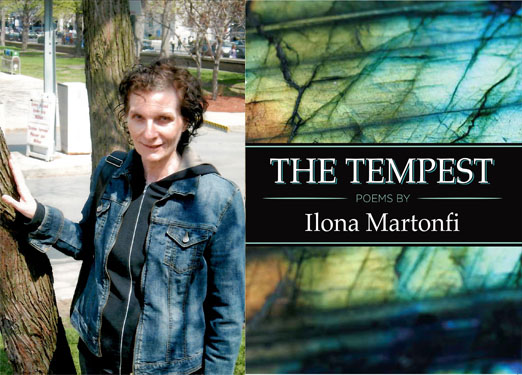Sometimes it is everywhere. I do not need to read or understand. I let it speak. The lament. The stillness. In medias res. I remember Paris. The Montreal Flood of 1987. Asks us, What does it mean when you dream about a place from your past? Kakekotoba. Haiga. The Musée de l’Orangerie. Water Lilies. Squatter. The Bailiff Sale. Covid-19 lockdowns and masks book launch.
In medias res
A narrative work beginning in medias res, lit. “into the middle of things” opens in the midst of the plot.
-Wikipedia
I remember Paris
A France Orly Airport passport stamp : July 13 1987.
The day before the Montreal flood, we flew to Paris for our five-week European family trip with our four children. Hotel close to Place de la Madeleine. Blue window shutters, birdcage elevator.
You stroll the boulevards. The Eiffel Tower. The Seine river. Café terrace on the Champs-Élysées. Remember the ice pear.
The Flood
The Montreal flash flood of 1987 happened on July 14 of that year when a series of strong thunderstorms crossed the island of Montreal, Canada, between the noon hour and 2:30 p.m. Over 100 millimetres of rain fell during this very short period of time. The sewer systems were overwhelmed by the deluge and the city was paralyzed by the flooded roads. Autoroute 15, a sunken highway also known as the Décarie Expressway, soon filled with water, trapping motorists. Some 350,000 houses lost electricity, and tens of thousands had flooded basements.
-Wikipedia
Kakekotoba
A kakekotoba or pivot word is a rhetorical device used in the Japanese poetic form waka.
-Wikipedia, Japanese Aesthetics
Haiga
Haiga (haikai drawing) is a style of Japanese painting that incorporates the aesthetics of haikai. Haiga are typically painted by haiku poets (haijin), and often accompanied by a haiku poem. Like the poetic form it accompanied, haiga was based on simple, yet often profound, observations of the everyday world.
-Wikipedia
The Orangerie
fragrant water lilies
at the Musée de l’Orangerie
emerging from mud
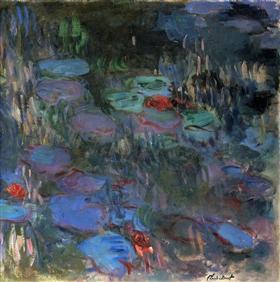
Monet_-_water-lilies-reflections-of-weeping-willows-right-half-1919.jpg .Wikimedia
The Musée de l’Orangerie is installed in an old orangery, built in 1852 to shelter the acidic citrus fruits from the ‘jardin des Tuileries’ in winter. An art gallery of impressionist and post-impressionist paintings located in the west corner of the Tuileries Garden next to the Place de la Concorde in Paris. The museum is most famous as the permanent home of eight large Water Lilies murals by Claude Monet.
-Wikipedia
English : Squatter
Hungarian : Guggoló
White Geese
Recurring dreams of white geese flying into our living room through the chimney. Nesting on the tan leather couch. I am folding the laundry. Baking apple pies. Our youngest daughter Sonya, in blue shorts and red top, playing the piano.
“You can live upstairs”, the new owner says. “We will live downstairs.”
Deed signed four decades ago, it was a family house. “Puttana!” he’d said. The slaps. Our four children eating their breakfast. Three adult daughters. 11 year old son.
Long after the house was abandoned. Where apple trees and wild roses rooted. Once the land of farmers in Anjou on Curé-Clermont Avenue homes built on river clay. It was a red brick house with many doors. A front door. A side door and back door. White marble fireplace. Ceramic tile floors. Bay windows. Two chimneys. Tile roof. Asphalt driveway. A semi-detached garage. The pool.
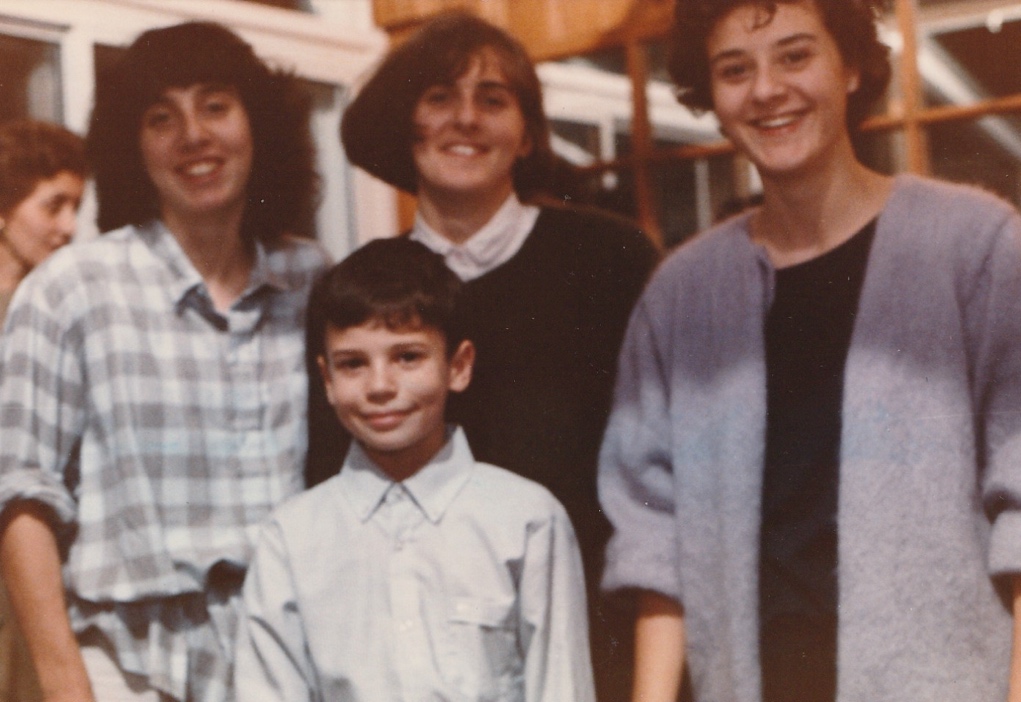
My daughters Marisa, Isabella, Sonya & my son Mike Di Sclafani
photo by Ilona Martonfi (Anjou 1985)
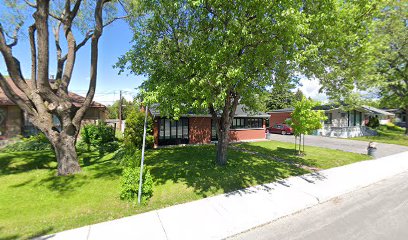
7751 Av. du Curé Clermont (Google Maps)
Our former Anjou house where we raised our four children. Brought home our newborn son, Mike.
His poetry:
butterfly hatches from its pod / wings are fresh and wet / flying free in the blue sky / sun shines down with rays strong and yellow
The Bailiff Sale
Offered for sale at auction 7751 avenue du Curé Clermont 1 1/2 storey house.
Two weeks after Christmas 1992. Our house was put on the block by the bank for unpaid taxes. “The house looked sad”, our daughter Isabella said. “People walking through. There were about forty people there.” A new family now lives there. The house with the pine wood side door, the small windowpane. Two apple trees. The lilac tree. In the walled garden the orangerie. Red clay pot geraniums. A cement staircase leading to the bunker kitchen. The black steel door.
Book Launch
A year ago, during Covid-19 lockdowns and masks, my book launch was celebrated on YouTube for my poetry collection The Tempest. With gratitude to Inanna Publications, especially to Renée Knapp, Publicist and Marketing Manager. Val Fullard, Cover Designer. The late Luciana Ricciutelli, my Editor. My family and friends.
The Tempest – Inanna Publications
https://www.inanna.ca ›
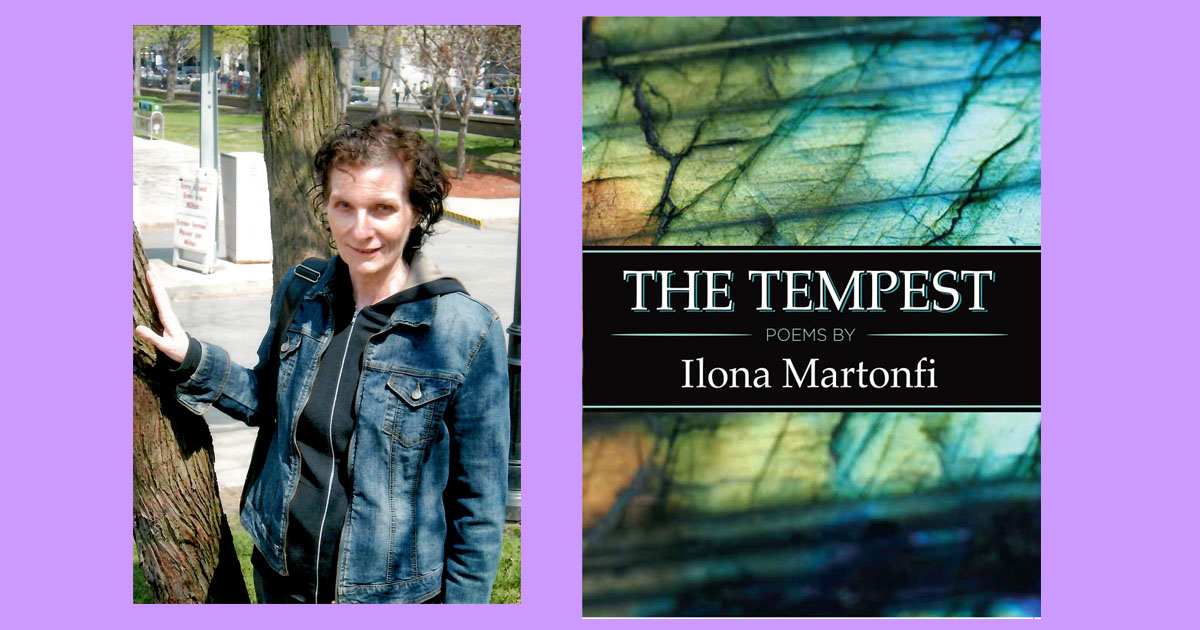
Author bio: Ilona Martonfi is a Montreal poet born in Budapest. She is a writer, editor, creative writing teacher, and founder of the writing group, Rue Towers Writers. She is the author of the poetry books, Blue Poppy (2009), Black Grass (2012), The Snow Kimono (2015), and Salt Bride (2019), as well as seven chapbooks, Visiting the Ridge, Charivari, Magda, Adagio, Mud, Moth and Black Rain. Ilona is Founder and Literary Curator of The Yellow Door and Visual Arts Centre Reading Series and Argo Bookshop’s Reading Series. She is a recipient of the QWF 2010 Community Award. Ilona has published extensively in print and online literary publications. She was a Finalist for the 2007 Quebec Writing Competition. Her story, “My Daughter, Marisa,” was published in CBC Story Anthology III, In Other Words: New English Writing from Quebec (2008), and Ilona’s “Stories of Belonging” was shortlisted for Canada Writes in the adult category (2014). She was also a StepAway Magazine nominee for the 2018 Pushcart Prize for the poem “Dachau Visit on a Rainy Day”. The Tempest is her fifth poetry collection.

